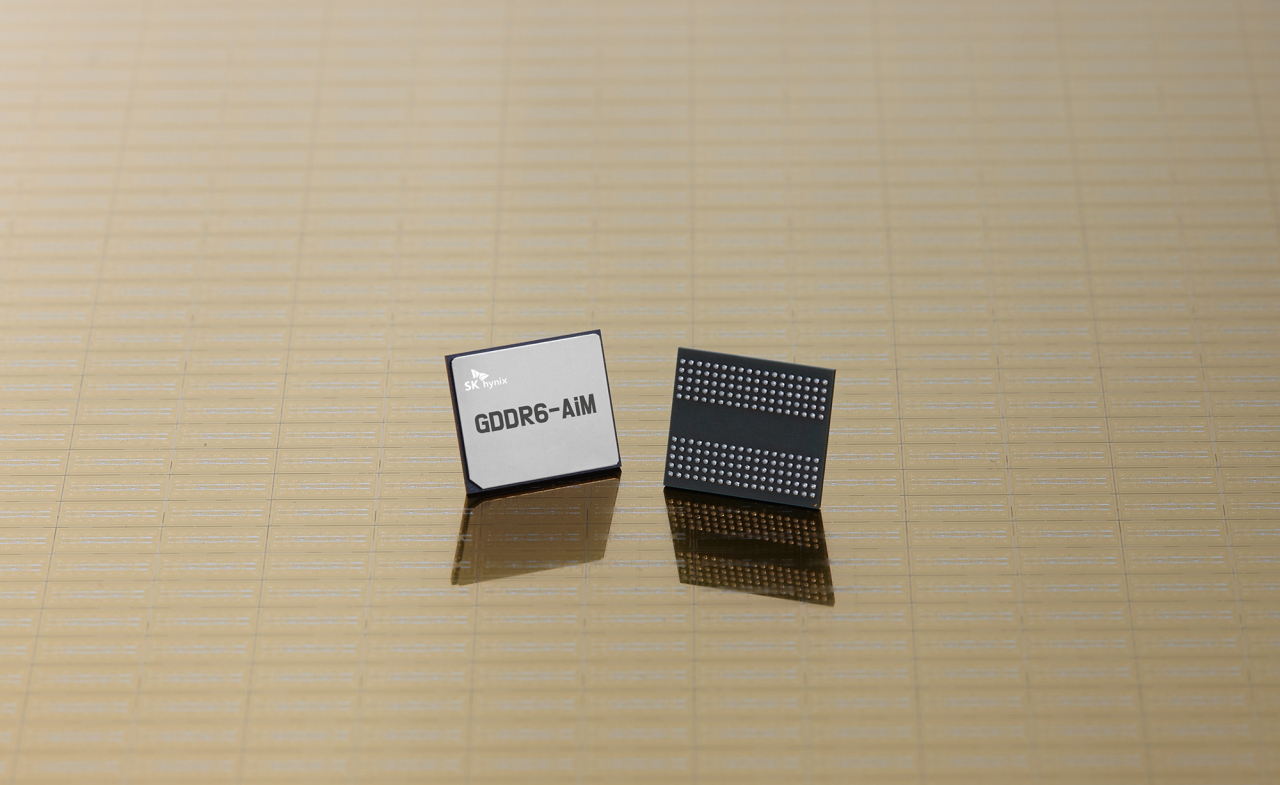SK hynix unveils new memory chips that are 16 times faster, 80% more efficient
By Kim Byung-wookPublished : Feb. 16, 2022 - 16:01

SK hynix on Wednesday introduced a next-generation memory chip that processes data 16 times faster and consumes 80 percent less electricity.
The process-in-memory or PIM chips developed by the South Korean chipmaker can both store and process data, while ordinary memory chips can only store data. As PIM chips can do two tasks at the same time and provide extra computing power, they have emerged as the key components in the artificial intelligence and big data sectors.
“Computers mounted with PIM chips instead of a general DRAM chip can increase the calculation speed up to 16 times. Also, PIM chips reduce the amount of data CPUs and GPUs and allow computers to consume electricity 80 percent less,” a company official said.
SK hynix plans to announce its research and development efforts on its PIM chips at the International Solid-State Circuits Conference, one of the major global chip events scheduled in San Francisco at the end of this month. This year, the ISSCC will be held under the topic “Intelligent Silicon for a Sustainable World,” a perfect theme to showcase the PIM chips.
SK hynix aims to further upgrade the PIM chips with the AI technology of Sapeon, an AI chip company that recently split off from SK Telecom.
“As data utilization with artificial neural network spikes, optimized computing technology for such calculation is essential. By merging technologies of the two firms, efficiency will be maximized in terms of data calculation, cost and energy consumption,” Sapeon CEO Ryu Soo-jung said.
Meanwhile, SK hynix solution development head Ahn Hyun said, “Using PIM chips with independent computing capacity, SK hynix will establish a new memory solution ecosystem.”
Once PIM chips evolve, they are expected to partially replace the role of CPUs and facilitate “memory-centric” computing inside devices such as smartphones.
The process-in-memory or PIM chips developed by the South Korean chipmaker can both store and process data, while ordinary memory chips can only store data. As PIM chips can do two tasks at the same time and provide extra computing power, they have emerged as the key components in the artificial intelligence and big data sectors.
“Computers mounted with PIM chips instead of a general DRAM chip can increase the calculation speed up to 16 times. Also, PIM chips reduce the amount of data CPUs and GPUs and allow computers to consume electricity 80 percent less,” a company official said.
SK hynix plans to announce its research and development efforts on its PIM chips at the International Solid-State Circuits Conference, one of the major global chip events scheduled in San Francisco at the end of this month. This year, the ISSCC will be held under the topic “Intelligent Silicon for a Sustainable World,” a perfect theme to showcase the PIM chips.
SK hynix aims to further upgrade the PIM chips with the AI technology of Sapeon, an AI chip company that recently split off from SK Telecom.
“As data utilization with artificial neural network spikes, optimized computing technology for such calculation is essential. By merging technologies of the two firms, efficiency will be maximized in terms of data calculation, cost and energy consumption,” Sapeon CEO Ryu Soo-jung said.
Meanwhile, SK hynix solution development head Ahn Hyun said, “Using PIM chips with independent computing capacity, SK hynix will establish a new memory solution ecosystem.”
Once PIM chips evolve, they are expected to partially replace the role of CPUs and facilitate “memory-centric” computing inside devices such as smartphones.








![[Kim Seong-kon] Democracy and the future of South Korea](http://res.heraldm.com/phpwas/restmb_idxmake.php?idx=644&simg=/content/image/2024/04/16/20240416050802_0.jpg&u=)







![[KH Explains] Hyundai's full hybrid edge to pay off amid slow transition to pure EVs](http://res.heraldm.com/phpwas/restmb_idxmake.php?idx=652&simg=/content/image/2024/04/18/20240418050645_0.jpg&u=20240418181020)

![[Today’s K-pop] Zico drops snippet of collaboration with Jennie](http://res.heraldm.com/phpwas/restmb_idxmake.php?idx=642&simg=/content/image/2024/04/18/20240418050702_0.jpg&u=)